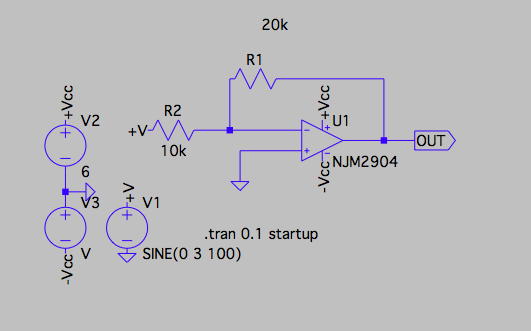

- #Gui in ltspice for mac for mac os
- #Gui in ltspice for mac install
- #Gui in ltspice for mac update
- #Gui in ltspice for mac software
- #Gui in ltspice for mac code
One of the things I learned about the Mac community early on (a characteristic perhaps weakened these days, following a decade of high numbers of switchers from Windows, and a decade of not having Jobs around) is that Mac users are picky about UI quality, often rejecting (like a failed organ transplant) naive ports of apps for other platforms that do not adequately adapt to the Mac UI conventions. Nowadays, of course, the apps are essentially self-contained, since that’s an absolute requirement on the iOS and Mac App Stores.
#Gui in ltspice for mac for mac os
I forget if they kept this system around in Office 2001, but for sure it was gone in Office v.X, the concurrent version for Mac OS X. I can’t emphasize enough how important the “repair” part was, since it was common in those days for support files to get borked.
#Gui in ltspice for mac install
So it gave the user the benefit of a simple drag-and-drop installation, while also allowing them to use a more complex install with shared support files for all users, including things like fonts that had to go in the System folder. Word/Excel/Powerpoint) capable of launching even if support files were missing, and then simply installing or repairing the support files if needed. What they did was to make the core apps (i.e. Another elegant solution (albeit one that’s not really relevant for or compatible with modern multi-user OSes where normal users do not have admin rights) is what Microsoft did for Office 98 on the Mac: drag and drop install even thought it needs support files outside of the application folder. I know it’s wasteful with storage, but in the end I think it’s a great compromise.
#Gui in ltspice for mac update
It’s super fun on my work computer where I don’t have admin rights and thus can’t update it.) I kinda wish more apps would follow the model used by Chrome and Firefox, where the installed app ultimately only acts as a launcher, running a (signed) executable actually stored in the user data, so that it can be updated automatically without admin rights. It just nags you that an update is available, but you have to download and install it manually from the website. (This reminds me that it bugs me that the Arduino IDE doesn’t have an auto-updater at all. Of course, they could just release on the Mac App Store and let it handle updates.

So I wonder if they used Sparkle and that’s why it’s not working.
#Gui in ltspice for mac code
Did it never work, or did it just never work on macOS 10.12? I speculate because countless apps used the open-source Sparkle framework for auto updating, and it’s great, except that the default code signing on 10.12 apparently castrates Sparkle. From what I can gather, in the Windows version you can just hit edit simulation in the toolbar, but the mac version has no toolbar. Ive rebooted, reinstalled, nothing seems to bring it back. If I click run i get a message saying "No analysis command found", if I right click and try to add commands i can't get that wizard type function, everything has to be done manually.

For love or money I can't get to that window anymore. Whatever it was, it would give me a window with operating point analysis, ac analysis, etc. It was so simple I can't even remember how, I either hit run and got it or I pressed S or something along those lines. Until tonight I was able to open a dialog box with some kind of directive wizard (something along the lines of saying "Help me edit").
#Gui in ltspice for mac software
Used it for a few days without issue, was starting to like having some simulation software handy again. Last week I decided to try it again and it worked like a charm. File under "Why do nerds always want to do things in the least user friendly way possible?" (I could rant on this topic for 10 pages.) Anyway. Once or twice I actually started following along with instructions found online about doing tricky things in terminal to get it working, but eventually it seemed legitimately faster to just build the damn circuit.

In the past I've tried a couple times to install this and it always threw a hissy fit and failed install in one way or another (multiple versions of OSX/LTspice, different computers, a total shitfight every time).


 0 kommentar(er)
0 kommentar(er)
